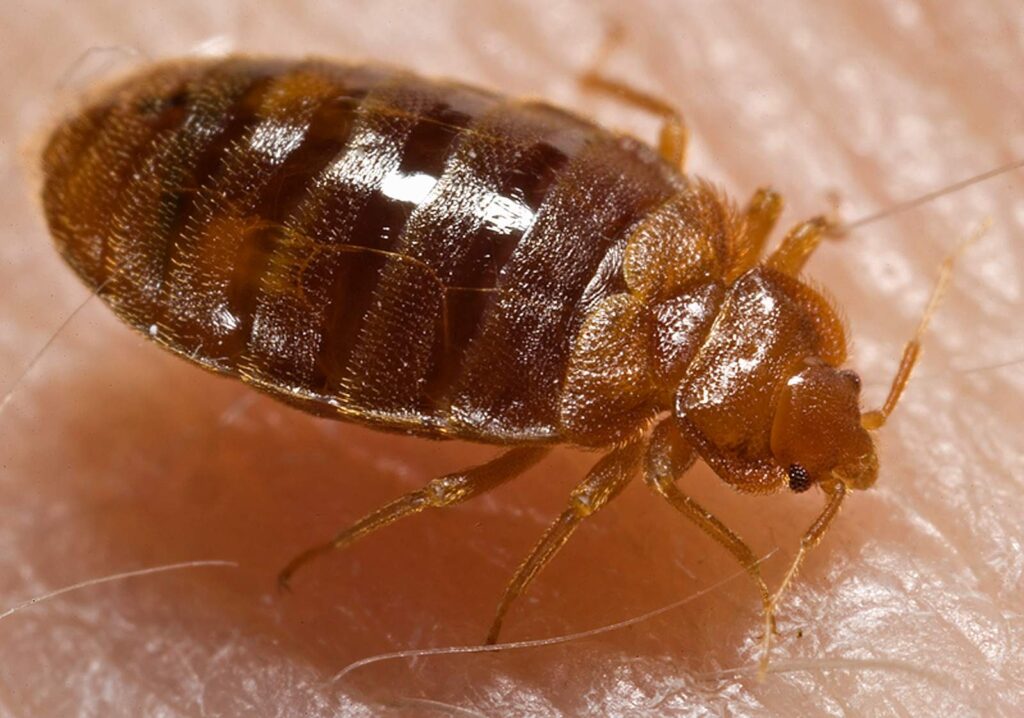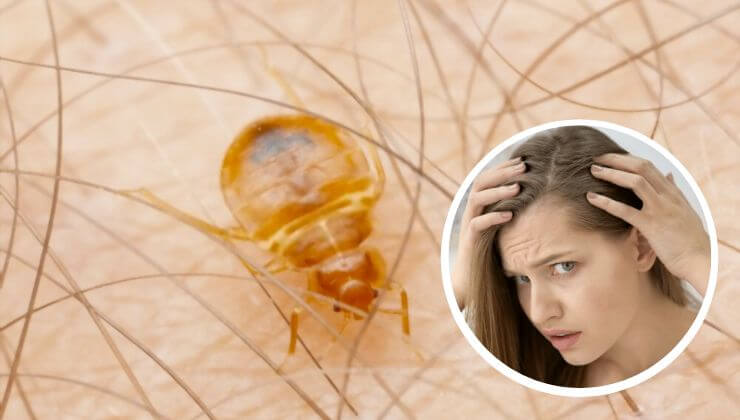Bedbugs are tiny insects known for feeding on the blood of both humans and animals. More than 90 species of bedbugs have been identified, but only two commonly target humans for feeding.
With their flat, oval-shaped bodies, bedbugs possess the ability to easily conceal themselves in various nooks and crannies, such as cracks in bed frames or the seams of mattresses. While they can be bothersome, bedbugs are not known to transmit diseases to humans. However, their bites can lead to persistent itching, which may result in infection if scratched excessively.
The likelihood of encountering a bedbug in your hair is highly unlikely, as they prefer to remain hidden away from their host’s line of sight. While it is conceivable for a bedbug to accidentally end up on your scalp during sleep, it is exceedingly improbable that they would choose to inhabit this area.
Why is it unlikely to have Bedbugs in your Hair
Bedbugs are parasitic insects that predominantly spend their time in hiding. They tend to inhabit areas in close proximity to where humans or animals sleep, facilitating easy access to their hosts for feeding during periods of rest.
Following a feeding session, bedbugs retreat to their concealed shelters. They prefer dark, undisturbed spaces located within approximately 8 feet of the sleeping area. Common hiding spots include:
- Around the bed
- In the cracks of bed frames or headboards
- Near piping
- In the seams or tags of mattresses
- Electrical receptacles and appliances
- Within the box spring
- Where walls meet the ceiling
- Seams of chairs or couches
- Drawer joints
- Beneath loose wallpaper
The human scalp is not an attractive habitat for bedbugs, as they favor environments that are undisturbed and dark. Additionally, they are not adapted to cling to hair follicles and would likely be washed out during bathing.
Furthermore, bedbugs are averse to heat. Exposure to temperatures of 113°F (45°C) for 90 minutes or 118°F (47.7°C) for 20 minutes results in their demise. Such temperatures can be encountered in settings like a car parked in direct sunlight or a sauna. Even a very hot shower can subject bedbugs to temperatures close to their maximum tolerance level.
Check this out: Hair Massage or Oil Champi for Hair Loss Prevention – A Comprehensive Guide by Ayurvedic Specialist
Can Bedbugs live anywhere on your Body?
Bedbugs typically do not establish permanent residence on humans. Their primary interaction with people occurs when they feed every few days.
Similar to hair, bedbugs are unlikely to survive long periods on human skin. They are prone to being washed away during bathing or seeking alternative hiding spots.

Other Insects more prone to appearing in Hair
- Head lice, considerably smaller than bedbugs, spend their entire lifecycle on human scalps. In contrast to bedbugs, lice possess crab-like claws that aid in attaching to hair strands. If they detach, they can only survive for 1 or 2 days.
- Scabies mites, transmitted through prolonged skin-to-skin contact, burrow into the skin, causing intense itching. Although scabies typically spare the face and scalp, individuals with compromised immune systems may develop a variant known as crusted scabies, potentially affecting the scalp.
- Fleas, capable of transferring from household pets to humans, typically target areas around ankles or lower legs for biting.
What to do if you find Bugs in your Hair
Finding bugs in your hair can be unsettling, though it’s improbable to pose significant health concerns. Cleansing your hair with a hot shower and shampoo can effectively dislodge any bugs that may have inadvertently found their way into your hair.
If you come across multiple tiny bugs in your hair, it’s highly possible that they are head lice. Seeking guidance from a healthcare professional is recommended for proper identification and determining the most suitable treatment plan.
Additionally, consulting a healthcare professional can aid in confirming a diagnosis of bedbugs by examining any bites you may have sustained.
